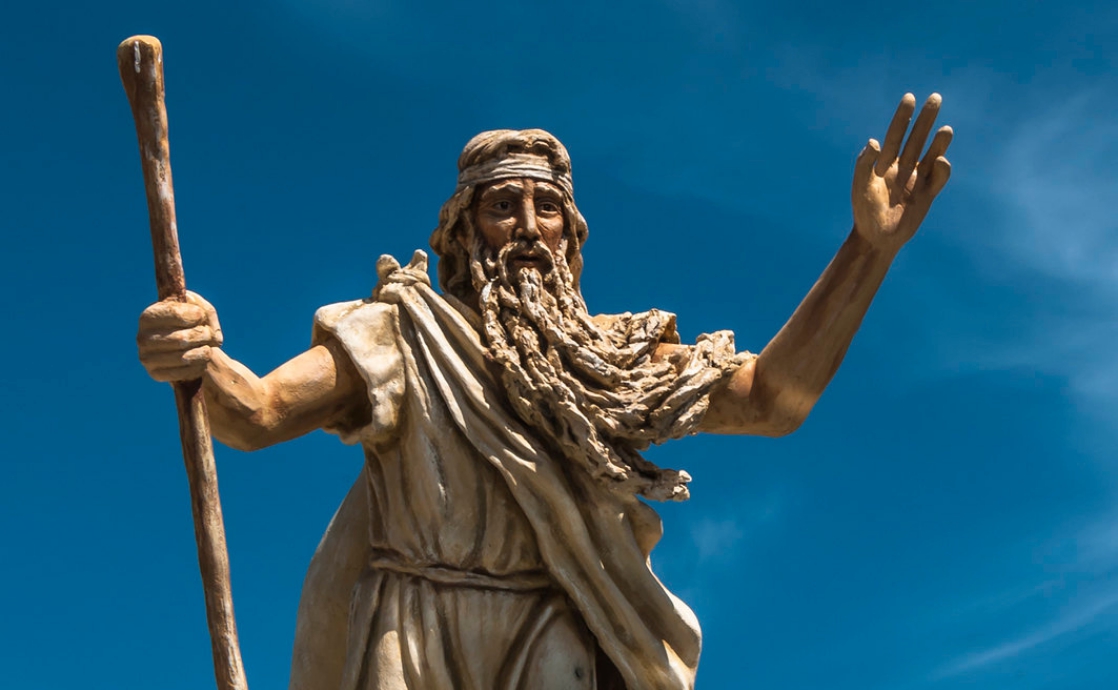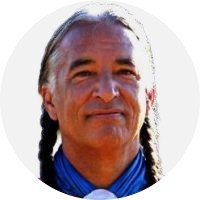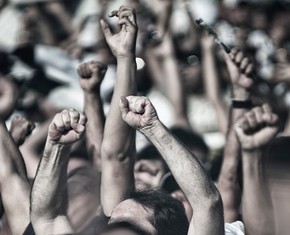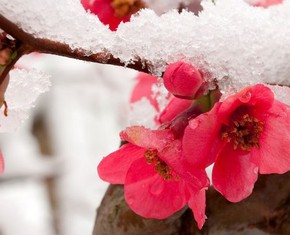The views expressed in our content reflect individual perspectives and do not represent the authoritative views of the Baha'i Faith.
Indigenous messengers of God have appeared to ancient peoples throughout the Americas – although we probably know more about the spiritual traditions of North America than the Southern continent.
In this essay, though, we’ll explore the life and teachings of one of the Indigenous messengers from what is now the nation of Colombia in South America – Bochica.
This Indigenous messenger brought moral, ethical, and spiritual teachings to the peoples who lived on the Altiplano Cundiboyacense, the high Andean plateau that now surrounds the city of Bogota. Like all holy prophets and messengers, the Baha’i teachings say, Bochica was a “center of illumination” for his people. In a speech he gave in Chicago in 1912, Abdu’l-Baha unpacked that term:
In our solar system the center of illumination is the sun itself. Through the will of God this central luminary is the one source of the existence and development of all phenomenal things. …
Likewise, in the spiritual realm of intelligence and idealism there must be a center of illumination, and that center is the everlasting, ever-shining Sun, the Word of God. Its lights are the lights of reality which have shone upon humanity, illumining the realm of thought and morals, conferring the bounties of the divine world upon man. These lights are the cause of the education of souls and the source of the enlightenment of hearts, sending forth in effulgent radiance the message of the glad tidings of the Kingdom of God. In brief, the moral and ethical world and the world of spiritual regeneration are dependent for their progressive being upon that heavenly Center of illumination. It gives forth the light of religion and bestows the life of the spirit, imbues humanity with archetypal virtues and confers eternal splendors. This Sun of Reality, this Center of effulgences, is the Prophet or Manifestation of God.
RELATED: Tunupa, the Aymara Messenger of God from Lake Titicaca

Q: Kevin, I noticed that Vinson Brown, despite his comparatively rich “Bibliography,” provides very few footnotes throughout his otherwise excellent book Voices of Earth and Sky. This is a notable drawback, because the reader has no immediate clue as to his sources of information, nowhere to check for verification, and no way to go forward to find further information. So, for instance, on p. 99, Brown talks about “Nemterequeteba,” the Colombian messenger of the Chibcha or Muisca people also known as Bochica, and by many other names as well: Chimizapagua, Nemquetheba, Neuterequeteua, Sadigua, Sugumonxe, Sugunsua, Xué, Zuhá, or Zuhé.
It appears that the most common name for this Indigenous messenger of God is Bochica, about whom precious little is known, since the accounts are so fragmentary. Adolph F. Bandelier, who wrote “Traditions of Pre-Colombian Landings on the Western Coast of South America,” in the American Anthropologist in 1905, offered some information:
Almost parallel with the Tonapa [Tunupa] and Viracocha lore is the myth of Bochica or Nemquetheba (Nemtherequeteba), also called Zuhé, among the Muysca or Chibcha Indians of Colombia. The four names apply, according to Piedrahita, to one individual. Fray Pedro Simon, who wrote somewhat earlier, discriminates between Bochica and Nemtherequeteba. Piedrahita asserts that, according to Chibcha tradition, Bochica “came” to the plateau of Bogota — whence, he does not state. He describes him as with a long beard and wearing long garments, as having walked with bare feet and gone about preaching and teaching the Indians a better mode of life. At Sogamoso, in the Colombian highlands, Bochica lived two thousand years, and died there after performing many miracles, among which the opening of the cleft at Tequendama is most conspicuous.
This brief anthropological note on Bochica (also known as Xue, the sun god) of the Muisca or Chibcha of Colombia does not provide much detail, but offers a striking parallel with Tunupa (see Part 85) and Viracocha (see Part 4). This source, from Fray Pedro Simón, the 15th Century Spanish Franciscan friar and chronicler of the Indigenous peoples of present-day Colombia and Venezuela, presents a seemingly reliable source of early information:
According to Chibcha legends, Bochica was a bearded man who came from the east. He taught the primitive Chibcha people ethical and moral norms and gave them a model by which to organize their states, with one spiritual and one secular leader. Bochica also taught the people agriculture, metalworking and other crafts before leaving for the west to live as an ascetic. When the Muisca later forsook the teachings of Bochica and turned to a life of excess, a flood engulfed the Savannah of Bogotá, where they lived. Upon appealing for aid from their hero, Bochica returned on a rainbow and with a strike from his staff, created the Tequendama Falls, through which the floodwaters could drain away.
Fast-forward to recent scholarly analysis. According to John Holmes McDowell, the author of Sayings of the Ancestors: The Spiritual Life of the Sibundoy Indians, Bochica is part of a wider complex of Andean “culture heroes:”
Inspection of pre-Colombian religious systems in the Andes, as portrayed in ethnohistorical documents, affords some notion of the general distribution of key elements in Sibundoy Valley cosmology. Knowledge of religious beliefs and practices in the northern Andes is scanty but very suggestive. The culture-hero complex among the Paez, Guambiano and other Chibchan nations of central Colombia, associated with figures like Guequiau (Castillo y Orozco 1877), Bochica (Simon 1953; Triana 1951), and Juan Tama (Rappaport 1978), evinces numerous parallels to Sibundoy Valley motifs.
In simpler English, McDowell appears to be saying that there is a “culture-hero complex” among the Chibchan nations of central Colombia, in which the figure of Bochica finds parallels with other Indigenous messengers like Guequiau, Juan Tama of the Paez people, and Wangetsmuna of the Sibundoy. This concept works well with the Baha’i principle of progressive revelation, which the Guardian of the Baha’i Faith, Shoghi Effendi, defined by quoting from the writings of Baha’u’llah:
… that religious truth is not absolute but relative, that Divine Revelation is continuous and progressive, that the Founders of all past religions, though different in the non-essential aspects of their teachings, “abide in the same Tabernacle, soar in the same heaven, are seated upon the same throne, utter the same speech and proclaim the same Faith.”
That the memory of Bochica, Viracocha, and other Indigenous messengers of God, according to their respective sacred traditions, is preserved to this day is remarkable, especially considering the vast stretches of time and the ravages of colonization. We should not be surprised that these venerable traditions are somewhat fragmentary and perhaps mythically embellished.
Your thoughts?
A: Hi Chris, great question and good observation. Yes, it is almost miraculous that even fragments of the memory of these great Indigenous messengers of God – often referred to by old-school anthropologists as “culture heroes” who brought moral codes to their respective peoples – have persisted to this day. So we should not be surprised that many of these accounts, relying on distant memories kept alive by Indigenous sacred oral traditions for centuries, are fragmentary, and perhaps intermixed with other narrative elements as well.
When awareness of the Baha’i Faith arrived in remote Indigenous areas, a persistent theme that emerged was the peoples’ expectation of the coming of a “Day of Fulfillment,” or the “Day of God.” One of the ubiquitous signs of this expected time of prophecies come true would be the ingathering of the diverse and dispersed Indigenous kindreds of the Western Hemisphere.
Perhaps this expectation cannot be associated with any one of the myriad holy ones who have walked these lands, but they have all used similar analogies and metaphors in conveying their divine guidance of the Indigenous peoples of the ancient Americas, which collectively represents the original spiritual heritage and legacy of the Western Hemisphere.
We all should honor, acknowledge, and respect that deep spiritual heritage.
RELATED: Ibeorgun, Spiritual Founder of Guna Culture
One common analogy, which you can find throughout the religious teachings of old and throughout the Baha’i writings, is the “divine springtime.” Many of the Indigenous peoples of the Americas have divinely inspired kinship systems or clans, in which everyone is related to the elements of nature. Those clans are often further divided between “earth clans” and “sky clans,” or earth and sea, or gentle and fierce creatures. These seeming dichotomies are resolved within each individual, since one’s parents must be from complementary clans – for example, sky clan marries earth clan, etc. So not only does each individual manifest the unity of creation, but also when the extended families or the body of the tribe gather together, they become a microcosm of the entirety of the creation.
As all-embracing as this system is, seemingly every Indigenous First Nation was aware that a sign of fulfillment would be when the disparate and widely separated diverse tribes and nations would hark back to loving and harmonious contact – and that, one day, collectively they would be able to share and bring their spiritual understandings to one great and grand table of unity across the Americas, and around the world.
One of the notable Baha’i initiatives from the 1970’s and 80’s was the “Trail of Light” – a great interchange and exchange between Indigenous North America and South America. (See “The Trail of Light and Native Baha’i Councils”)
That movement focused on spiritual unity, recognizing the diverse Indigenous populations of this Western Hemisphere as truly the foundation for hemispheric unity and oneness, and a stepping stone to the inevitable global ingathering of all.

















Comments
Sign in or create an account
Continue with Googleor